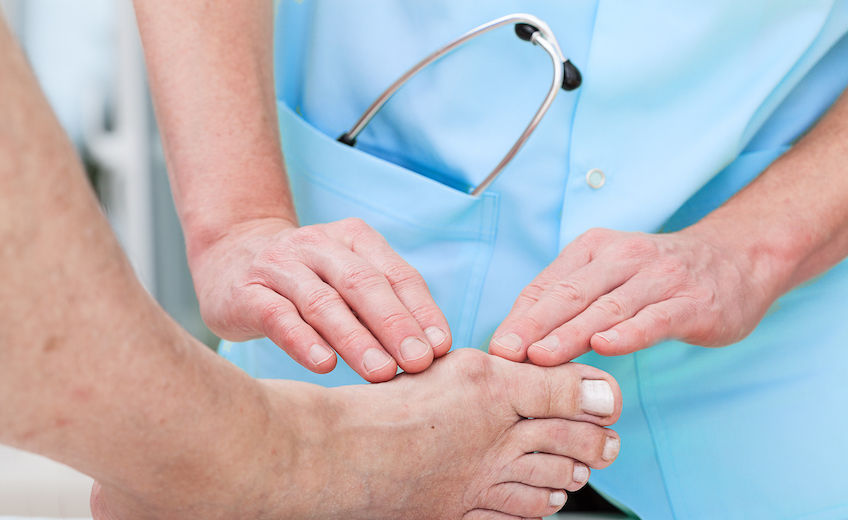What is a bunion?
A bunion is a bone deformity caused by an enlargement of the joint at the base and side of the big toe (metatarsophalangeal joint). Bunions form when the toe moves out of place. The enlargement and its protuberance cause friction and pressure as they rub against footwear. Over time, the movement of the big toe angles in toward the other toes, sometimes overlapping a third toe (known as Hallux Valgus). The growing enlargement or protuberance then causes more irritation or inflammation. In some cases, the big toe moves toward the second toe and rotates or twists, which is known as Hallus Abducto Valgus. Bunions can also lead to other toe deformities, such as hammertoe.
Genetic Factors
Genetic factors are important in the formation of bunions – people who get bunions are usually genetically predisposed to this bone displacement and may cause its onset by wearing ill-fitting shoes or by running or walking in a way that causes stress to the feet. Another common cause for bunions is wearing high heeled shoes. The weight of the body in these shoes pushes the toes into an unnatural position, possibly causing bone displacement.
Treatment
Early treatment of bunions is centered on providing symptomatic relief. Switching to a shoe with a rounder, deeper toe box and made of a softer more pliable leather will often provide immediate relief. The use of pads and cushions to reduce the pressure over the bone can also be helpful for mild bunion deformities. Functional foot orthotics, by controlling abnormal pronation, reduces the deforming forces leading to bunions in the first place. These may help reduce pain in mild bunion deformities and slow the progression of the deformity. When these conservative measures fail to provided adequate relief, surgical correction is indicated. The choice of surgical procedures (bunionectomy) is based on a biomechanical and radiographic examination of the foot. Because there is actual bone displacement and joint adaptation, most successful bunionectomies require cutting and realigning the 1st metatarsal (an osteotomy). Simply “shaving the bump” is often inadequate in providing long-term relief of symptoms and in some cases can actually cause the bunion to progress faster. The most common procedure performed for the correction of bunions is the 1st metatarsal neck osteotomy, near the level of the joint. This refers to the anatomical site on the 1st metatarsal where the actual bone cut is made. Other procedures are performed in the shaft of the metatarsal bone and still other procedures are selected by the surgeon that are performed in the base of the metatarsal bone.

